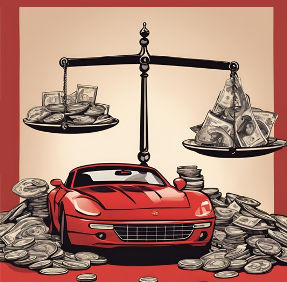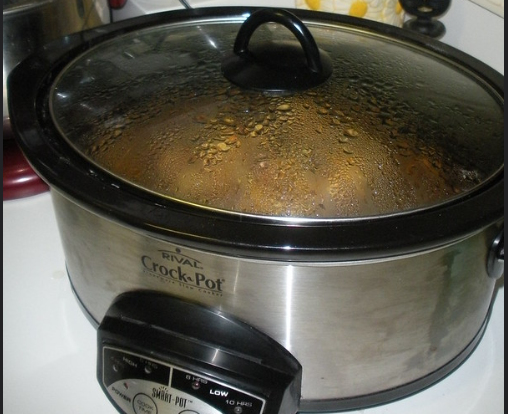Buying a New Car-
For many people buying a new car is their biggest financial investment after buying a house. So it’s important to get it right. Over the last few years the economic climate has been uncertain at best and this has left many people with less disposable income and a tighter monthly budget. Owning a car is notoriously expensive, but is it too expensive considering your current economic situation?
Here are some things you’ll want to consider before buying a new car :
Your Car Budget-
Work out how much you can afford to spend on a car. Sit down figure out your monthly income and expenditures. If you are having difficulty making ends meet each month without a car factored in, it is probably not the best time to think about buying a car. But if you already have a car that has high maintenance costs you need to look closer.
Remember that there is more to owning a car than just the initial purchase price. You will need to take into account additional costs, such as maintenance, any additional taxes, insurance (which can be very expensive particularly if you are young or you have relatively little driving experience) and of course operating expenses like gas, oil and even windshield wiper fluid.
If you buy a car outright you are responsible for its upkeep, taxes and Car Insurance and this can amount to thousands of dollars per year. If you do not have much spare cash at the end of the month, you may be tempted by the ads you see on TV for fixed rate leases since they may cover maintenance in the monthly fee. But on newer vehicles the maintenance is not the major expense it is still gas and insurance. Since you will need not only liability insurance but comprehensive as well to cover the replacement cost of the vehicle should you have an accident. See : The Ins and Outs of Car Insurance and Car Insurance Terminology for Newbies.
Should You Consider a Used Car?
A car is an investment but you must remember that cars lose value over time. As a matter of fact, a new car can lose 10-20% of its value just driving it off the dealer’s lot. That is a big loss. For those on a tight budget a used car is a better option. First of all you don’t lose that initial value. But more than that you can use resources like Consumer Reports to check for chronic problems with particular models. That information isn’t available when the car is new, even if the model is supposedly the same as the previous year there are often entirely different problems that crop up. So you should look at reliability, owner satisfaction, operating costs, mileage (MPG), etc. Often you can find categories like best cars in a specific price range and find the best one for your needs.
It is usually more economical to keep a car for as long as possible until the repair costs get to be unmanageable. Of course if the car is always breaking down and spends more time in the shop than in your driveway it isn’t much use. But even if you have to do one or two fairly large repairs of $500 each a year it may still be more economical than buying a new car. So you need to take that into consideration. Also if you are planning to keep the car for a number of years (and you should) you must “amortize” the cost of the vehicle over the whole period. That means that to really figure out how much a car costs you you have to consider how much you paid for it, how much you sold it for when you get rid of it and how many years you had it. So assuming that insurance costs and Fuel costs are the same here are how some different cars might work out:
| Purchase Price | Sales Price |
Average Annual Maintenance Costs |
Years owned | Cost per Year | |
| Car A | $20,000 | $15,000 | $200 | 3 | $1,866.67 |
| Car B | $10,000 | $5,000 | $500 | 5 | $1,500 |
| Car C | $10,000 | $2,500 | $700 | 10 | $1,450 |
| Car D | $10,000 | 0 | $800 | 15 | $1,466 |
| Car E | $5,000 | $2,500 | $800 | 5 | $1,300 |
| Car F | $2,500 | 0 | $1000 | 5 | $1,500 |
The formula is:
Annual Cost equals (Purchase price minus Sales price) plus (years owned times annual maintenance costs) all divided by years owned.
Remember: The above table is just a made up example it doesn’t represent real cars.
From the table above we can see that car A is a nicer newer car and it lost $5,000 worth of value over the first 3 years but it didn’t need much maintenance so the cost per year was $1,866.67. Car B was cheaper to start with also lost $5,000 in value but over 5 years and had slightly higher annual maintenance costs. Car C was the same car as car B but held for 10 years instead of only 5 so at the end it had decreased in value more and the average annual maintenance costs went up. (Of course, the first five years would have been the same as example B and the second 5 would have been higher than the average). So in this case, even though the annual maintenance costs went up, the cost per year actually went down. One thing to research is the estimated resale value of the model you are considering. If you plan on keeping the car for a short period a car that retains its resale value well can actually make your annual costs lower than someone who holds his car for longer periods.
For Car D the same car held an additional 5 years until it broke down and was totally worthless. In this case the cost per year went up slightly but not significantly.
Car E is actually, if you had bought car B when the owner sold it for $5000. This would also be the second half of Car C’s ownership. In this case, maintenance costs are higher (Car C’s first half brought his average down). But overall the annual cost of ownership is cheaper and the cost of entry was lower as well. But if annual maintenance costs had been slightly higher the annual costs could actually be more than Car B (or even Car A) so that is why it is so important to check reliability and repair costs before choosing a vehicle.
Car F is if you had bought the car from the owner of Car E when he sold it. Surprisingly driving this old clunker could actually cost just as much per year as Car B (or even more), the only advantage would be the lower cost of getting started.
Other Car Considerations
If you need to take out a loan, you have to add the interest costs into the annual cost calculations above. If you need car loans for bad credit it will probably cost you even more.
One alternative to owning a car that is often presented in car commercials, is leasing. Here you need to determine who will be responsible for maintenance costs and what happens at the end of the lease will you have the option to purchase the car? Will you have to pay a penalty if you drive more than 10,000 miles per year? Will you have fees due at the end of the lease? etc. If maintenance costs are included in the lease, one advantage is that you will know exactly how much the car will cost you every month of the lease. But usually the cost of leasing is higher than outright ownership. The only exception to this is if you have your own business and use the car for business purposes. In that case you may be able to use the lease payments to reduce your tax burden.
Conclusion:
Buying a car is an important decision and it’s worth taking time to do some research and think about your options. If you are thinking about a loan or you have questions about car finance, it is worth seeing a financial adviser.
See Also:
- The Ins and Outs of Car Insurance
- Car Insurance Lessons for Young Adults
- The Error Of Postponing Your Car Maintenance
- Save on Automobile Insurance
- Do You Know That You Can Lower Your Car Insurance Costs?
- Look Out Ahead: How to Avoid Common Road Hazards
- Five Ways To Save On Car Insurance Costs
- Make Car Insurance Quotes a Regular Habit
- Car Insurance Terminology for Newbies
- Teen Car Insurance Discounts to Save You Money
- Car Insurance Savings That Most Drivers Overlook





